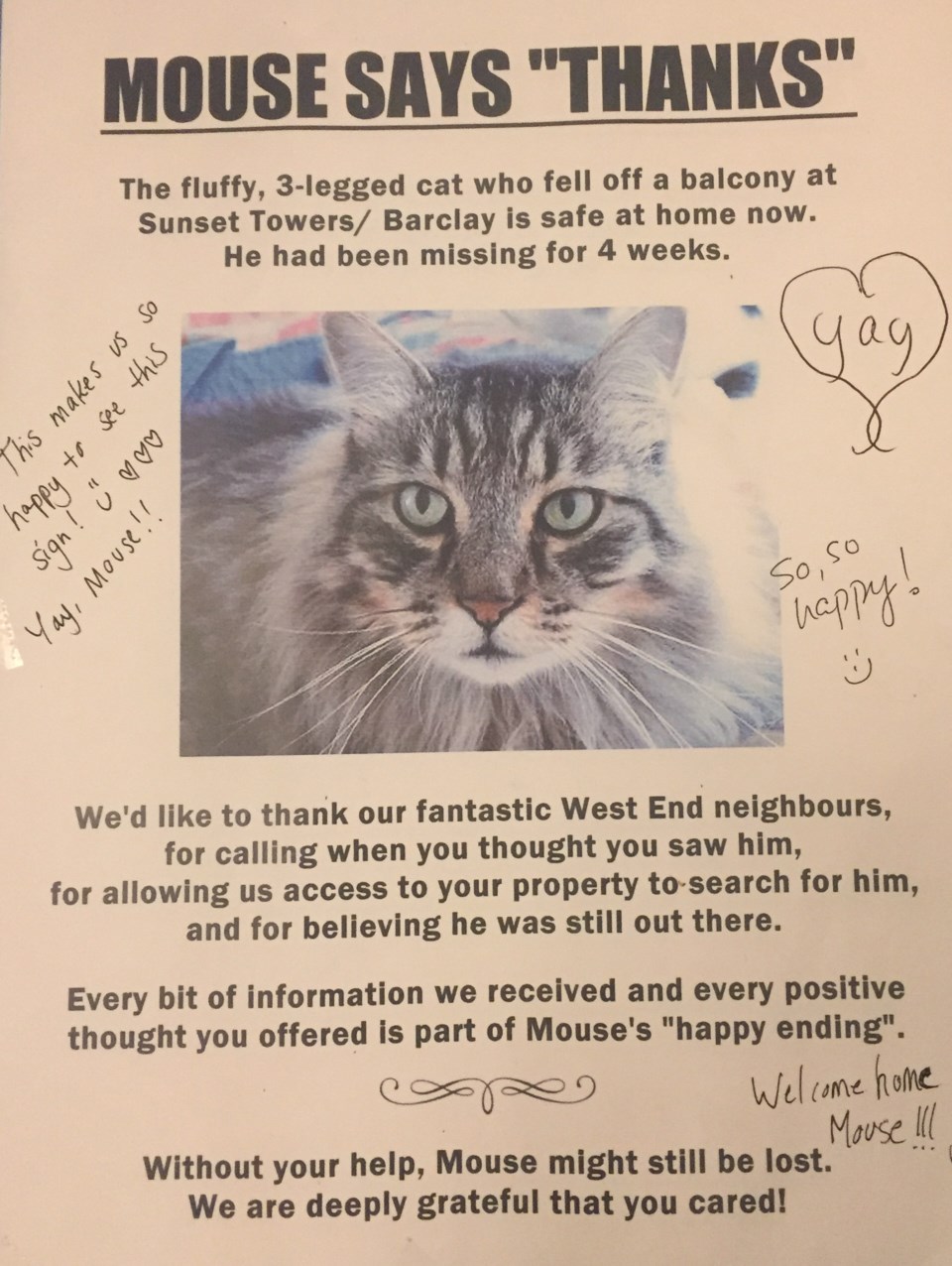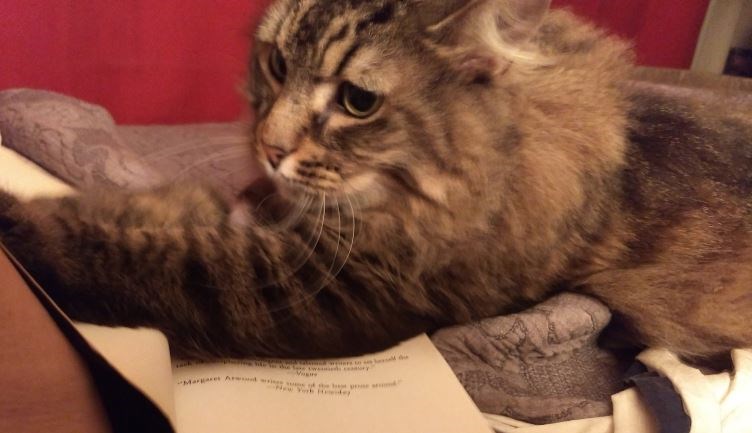It wasnвҖҷt the very next day, but this cat did eventually come back.
When Carol Ogston-Gardner got home at around 5 p.m. on Aug. 1 she didnвҖҷt realize anything was amiss. About an hour later she did what she always does at that time of day вҖ” put dinner out for her cats Mouse and Peewee.
вҖңI got the dinner ready and Peewee was right there but Mouse wasnвҖҷt anywhere,вҖқ she remembers.
Ten minutes passed and she began to think something is wrong.
вҖңI looked under the bed, which is his favourite hiding spot, in the closets, on all the shelvesвҖҰ and he just wasnвҖҷt anywhere.вҖқ
She called her boyfriend who said he thought Mouse had eaten his breakfast that morning but it can be hard to tell with two cats in the house.
Ogston-Gardner said the couple was looking around on the balcony, which is covered with bird netting to keep the pigeons away, when they noticed dents in an awning below their ninth-floor West End apartment. They surmised that Mouse, a three-legged Maine Coon, got around the netting, fell off the balcony and, scared, ran for cover. A search of the area turned up no signs of the cat.
Fliers were made and posted around the building but two weeks passed with no sign of Mouse.

Мэ
ThatвҖҷs when Ogston-Gardner got some unexpected help from a woman in the neighbourhood.
Lynne, who did not want her last name used, volunteers to help find lost cats. After losing her own cat 10 years ago, she educated herself on feline behaviour, tracking and trapping techniques. When she sees a lost cat poster in her neighbourhood she will often call the owner to volunteer her services.
And she has a pretty good track record. Over the years, sheвҖҷs gone after 60 missing cats and found 40.
Lynne saw MouseвҖҷs poster, contacted Ogston-Gardner and the two women got to work.
First up, Lynne said, more posters. She recommends making 50 to 100 fliers and posting them in the immediate area. Everywhere вҖ” on every pole, dumpsters, in alleys and along boulevards вҖ” on your block and the surrounding block. Most missing felines donвҖҷt go far, she said. Many are found within 200 feet of home.
They set up a few cameras to monitor the area. Lynne has some of her own, and they also borrowed some equipment from В鶹ҙ«ГҪУі»ӯOrphan Kitten Rescue Association.
On Aug. 21, they got a message from a neighbour who said she thought she had seen Mouse on her patio. She gave permission for Lynne and Ogston-Gardner to set up a camera on the patio and two days later they got a clear picture of Mouse. The next day, Lynne brought over one of her traps and some food. It takes a few days of what she calls вҖңtrap trainingвҖқ to get the cat comfortable enough to walk far enough into the trap to trigger it closed. At 5 a.m. on Aug. 28, four weeks after Mouse initially went missing, the women got a message from the neighbour that there was something in the trap.
They headed over to confirm it was Mouse and brought him home.
вҖңIt couldnвҖҷt have been done without neighbourhood involvement,вҖқ Lynne said. вҖңWe wouldnвҖҷt have gotten that cat back.вҖқ
Ogston-Gardner said Mouse spent the first several hours at home under the bed but soon came out to get reacquainted.
He was a little worse for wear after four weeks on his own вҖ” his fur was quite matted, she said, and he had a gash on his remaining hind leg. She contacted the VOKRA who got her in to see a local vet. Mouse needed some stiches and had to have some of his fur shaved, but he is recovering well and Ogston-Gardner reports that he is happy to be home.
The experience inspired her to volunteer with VOKRA, which has its fundraiser, Walk for the Kitties, coming up Sept. 17 a Jericho Beach. For more information visit .



